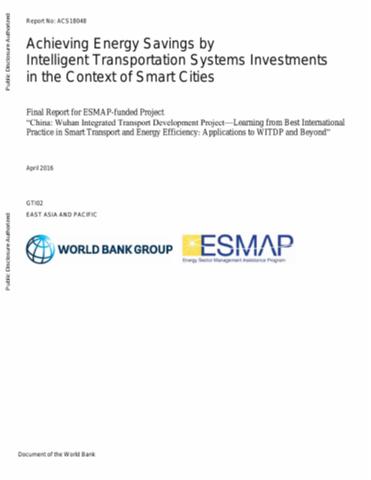Resource information
Faced with the challenge of providing adequate transport services with limited resources, cities have, for several decades, been investing in Intelligent Transportation Systems (ITS). ITS utilize Information and Communications Technology (ICT) to make more efficient use of existing transport infrastructure with the aim of improving transport services and reducing congestion, accidents, and air pollution. In the past two decades, with the rapid advancement of ICT and intensive advocacy from big technology vendors, the concept of ‘smart cities’ has gained great popularity and many cities have started to undertake a more holistic approach to improving urban services using technology in the name of smart city initiatives. Section two introduces these themes, which serve as the analytical framework to understand how smart mobility investments lead to energy savings. The comparison in the search for similarities among the case studies and interviews helped us develop a conceptual model, emphasizing cause and effect and presented in section three, of how ITS deployment and operation in the context of smart cities leads to energy saving benefits. This conceptual model is presented with detailed discussions of institutional, technological, and physical conditions at each step in the model. Section four focuses on energy savings with quantitative evidence of energy saving potential of ITS investments collected from literature and case studies. Section five links the results of this study to the Wuhan Integrated Transport Development Project and how the knowledge has been incorporated into project design. To further explore the energy efficiency potential of Wuhan and to mainstream ITS and smart transport solutions as a source of achieving energy efficiency using results of this study, a TRACE analysis was also completed as part of this research effort. This analysis focused on the passenger transport sector. Finally, policy recommendations on the major conditions under which ITS investments in the context of smart cities achieve energy savings are summarized in Section 6 with specific implications for cities in the developing countries.


